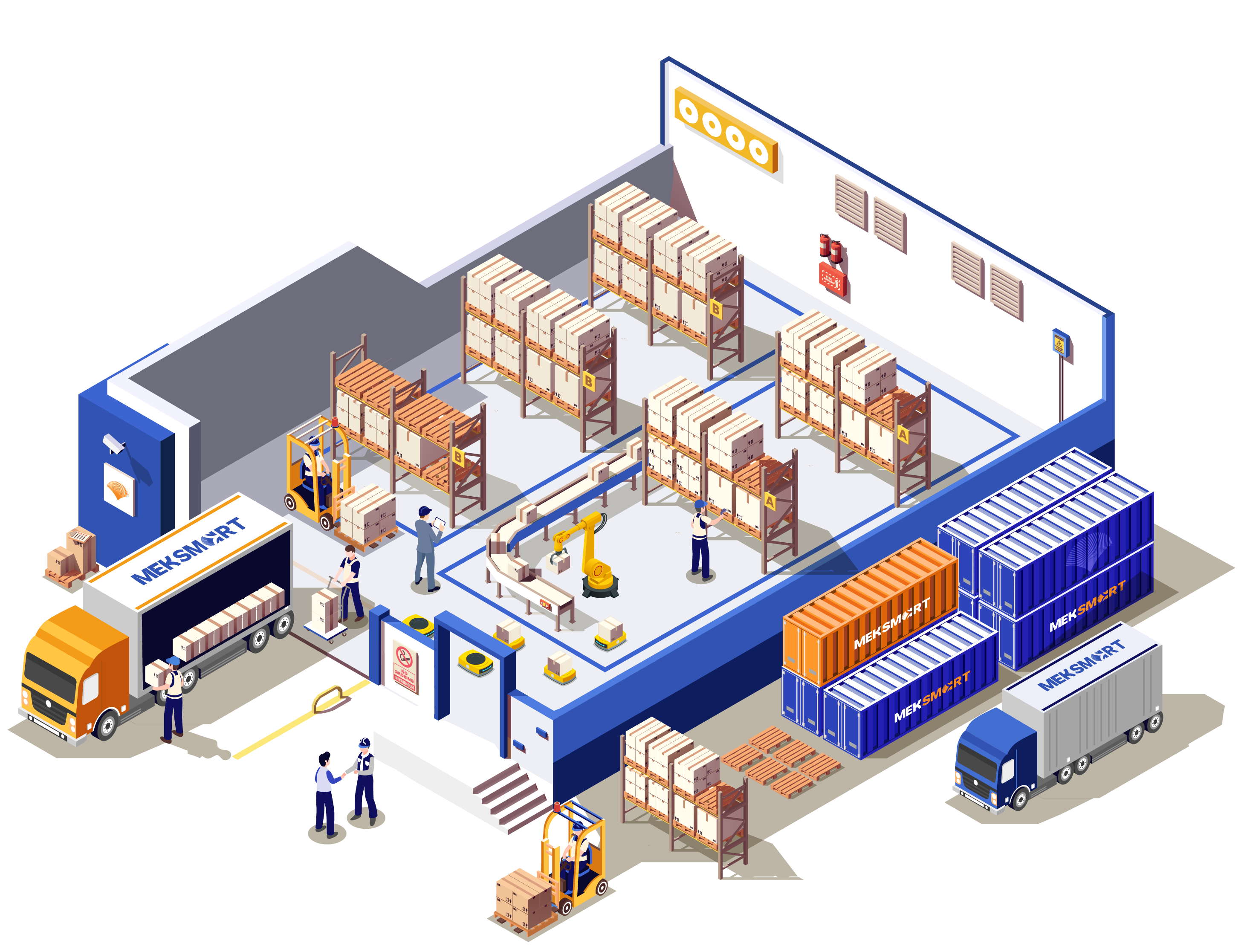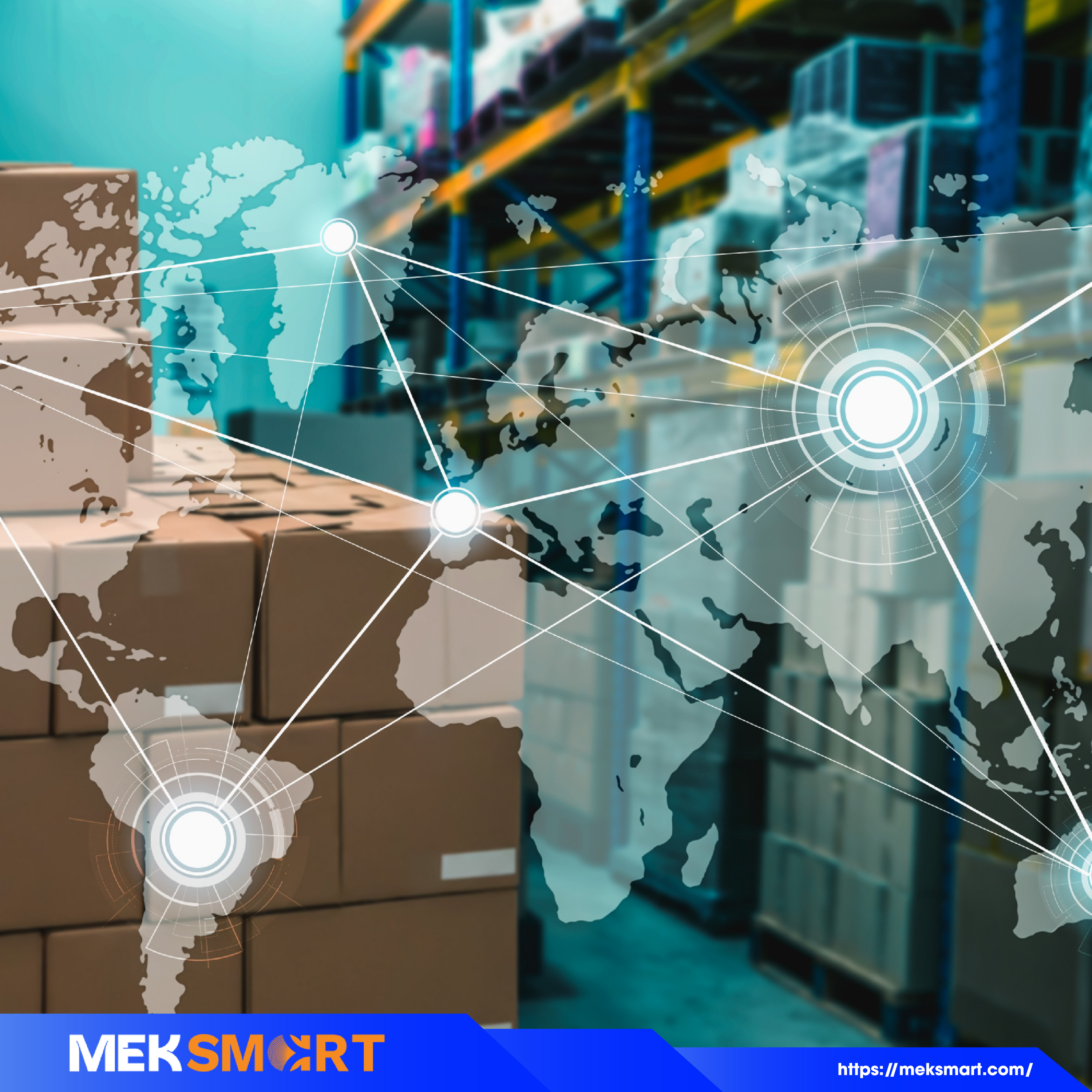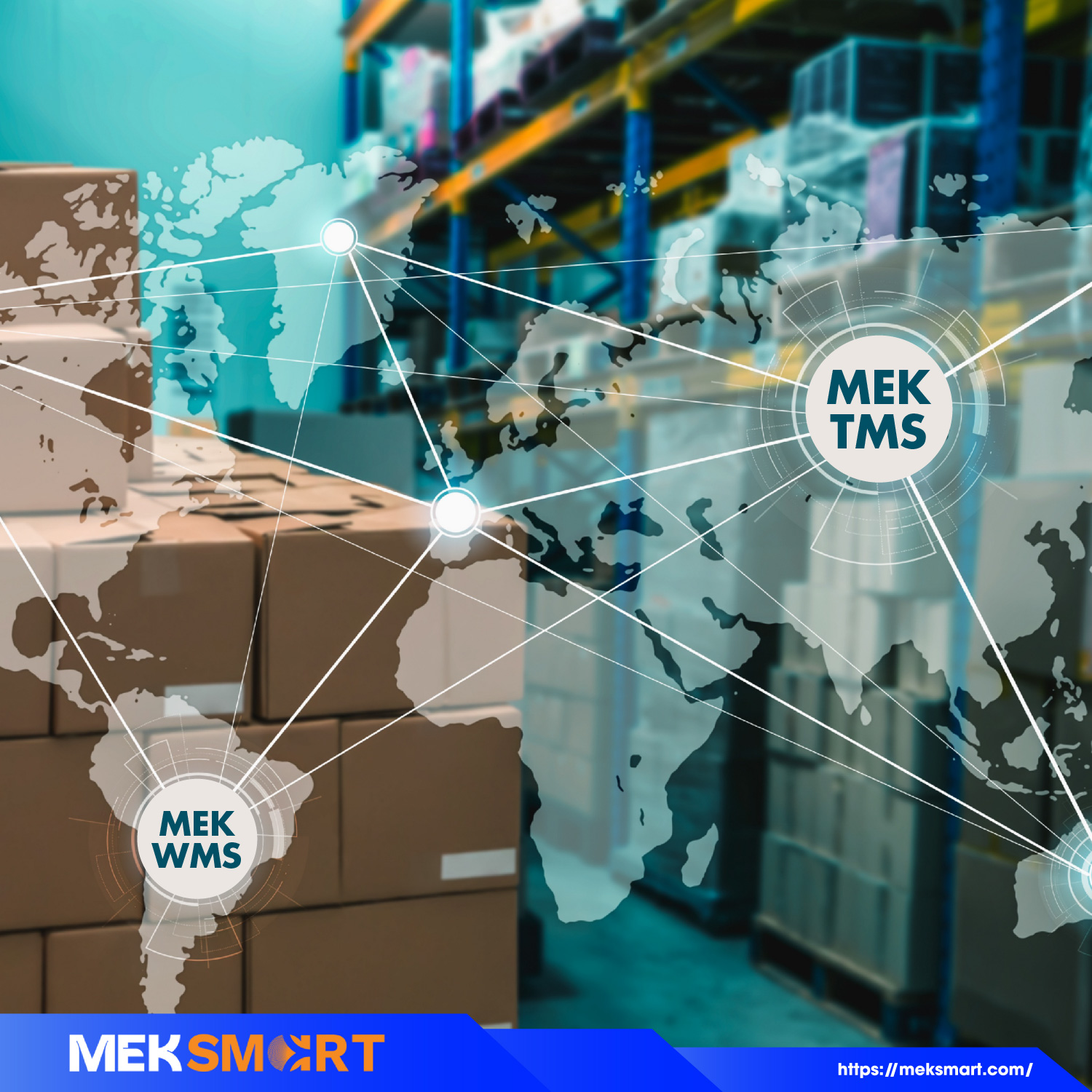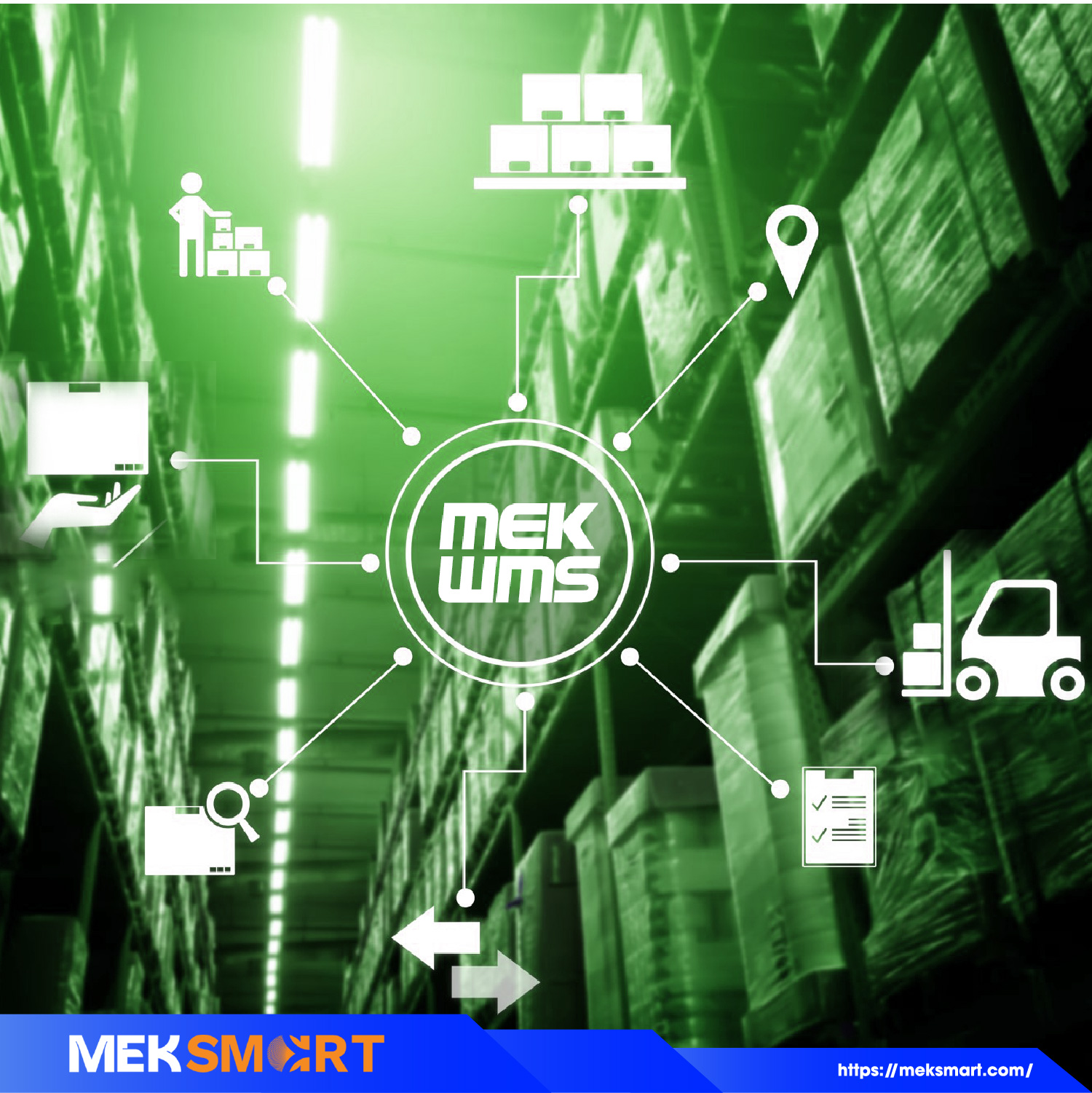MEKSMART
GENERAL NEWS
Author: Meker M
Update: 14/12/2022
WHAT IS PULL SYSTEM? PULL STRATEGY IN INVENTORY MANAGEMENT
What is Pull System? Pull strategy in inventory management
Pull System (also known as pull production system) is one of the important principles of Lean Manufacturing. Accordingly, the production of goods is initiated from specific orders of customers.
What is Pull System?
A pull system is a production flow in a factory that is regulated by demand from the end of the process. That is, when there is a signal from the following stage, the previous stage will proceed to produce the product.
The purpose of using the Pull system is to minimize the amount of inventory, including both in-process inventory and finished product inventory. The higher the volume of inventory in the process, the greater the risk of generating waste products, and causing losses and waste. Along with that is the loss of money stored in production activities.
Pull System in relation to inventory problem
In manufacturing, businesses often tend to rely on market surveys and then predict the output. Only then will production be carried out, and then pushed to the consumer market. When the market fluctuates or goes down, inventory will become a dilemma for businesses, reducing profits, and affecting the entire supply chain of enterprises.
Before the above problem, production managers have found answers to reducing inventory, including:
Do well in forecasting, so that the production quantity matches the consumption quantity. At the same time, there must be a good consumption system to make all the consumption.
Stop mass production, which will certainly minimize the amount of inventory.
If deployed according to the first option, it requires businesses to have a good forecasting system. But in a volatile market like today, this is very difficult, as predictions are often less accurate.
If implementing the second option, forcing each enterprise to remove the manufacturer-centric mindset to let customers decide how much to produce (customer-centric). That is, the factory will produce according to orders, thereby eliminating the difficult inventory problem.
Operating according to the first type, people choose the push system (Push System); In the second type, people will choose according to the pull system.
.jpg)
(The figure illustrates the difference between the Pull system and the Push System)
Pull System production models
- Replenishment Pull System
In this model, the business intentionally maintains an inventory of finished goods for each product category or group. When the inventory is below the specified level, the new enterprise issues an order to fill the warehouse by producing more products to fill the empty space in the warehouse. The inventory filling system is commonly applied in businesses with many small customers who often order standard products. In this system, the production schedule is known long in advance, so the raw material inventory level is also specified.
Sequential Pull System
With this “Pull Production” model, all products are made to order, so work orders are only pushed when the order is required. This system is often applied in B2B businesses, which have few customers but are large customers, buying products with special requirements. Despite having a lower inventory of finished goods, this pull-manufacturing business still has a large stock of raw materials (or semi-finished products) because production schedules are unpredictable with exactly what and when customers will need them. ..
Mixed Pull System
In the complex model, several components of the fill and make-to-order systems are used to support each other. Specifically, a business may manufacture some products on a full stock basis while producing others with a make-to-order system. For example, a business needs to maintain specified levels of inventory for certain types of semi-finished products and only produce finished products when requested by customers. In this case, the enterprise applies a system of filling inventory for the production of semi-finished products. As for the rest of the production line, businesses will apply the order-to-order process..png)
The process of implementation steps of the Pull system
The order starts from the customer's order request
When an order is received from a customer and communicated to the factory, the work order is first sent to a stage at the end of the manufacturing process (such as packaging or complete assembly). This is in stark contrast to the communication method where the work order is sent to the early stages of the process (such as raw material processing).
This approach requires a highly efficient information system to ensure that upstream supply chains continuously capture customer needs later in the production process.
The product is formed based on the cohesion of the stages
Each stage will follow each other to create the final finished product. Accordingly, each factory will be continuously streamlined to reduce unnecessary work and waste resources. This means that only when there is a need (signal) in the next stage, the previous stage will process the material.
The production rate is determined by the consumption rate of the following stage
The level of production of each stage will be equal to the level of consumption and completion of the following, adjacent stages. The Pull method is similar to the Just-In-Time manufacturing concept in that raw materials or semi-finished products are delivered in the right quantities and “just in time” when the latter is needed.
Impact of Pull System on Production Planning
Most Vietnamese enterprises use a central planning system. That is, the production planning department builds the production schedule and allocates work orders to the workshops for batch processing. This is a push system (Push System), which means that materials are pushed through the production process based on the production schedule. The Material Requirements Planning (MRP) model of most Enterprise Resource Planning (ERP) systems work on this basis.
In push production (Push System), if the production forecast is not accurate or there is not enough information about the production situation, demand at each stage, or there is no effective tool to analyze demand (spectrum). variable with the characteristics of Vietnamese manufacturing enterprises), production allocation may lead to too much or too little. This will easily lead to production flow congestion, excess inventory, and difficulty making the most of resources to promote production.
In contrast, the key element of a pull system is the allocation of workflows based on the needs of the production line (rather than the production allocation planned by the central operating system). Although Lean businesses still have a production plan, this plan is mainly used for the following goals:
- Planning equipment capacity requirements, including changes to the parameters of lines or cells (product cells/panels);
- Manpower requirements planning;
- Reconcile work orders for the factory
- Material requirements planning.
- Evaluation of Pull system strategy
- Advantages of propulsion system
Pull strategy often involves Just-In-time in inventory management. From there, reduce the amount of inventory and focus on building a lean, just-in-time supply chain, avoiding waiting to waste.
By implementing the above system, companies will reduce the wasteful cost of holding inventory that cannot be sold.
Review of the Pull system strategy
Advantages
Pull strategy often involves Just-In-time in inventory management. From there, reduce the amount of inventory and focus on building a lean, just-in-time supply chain, avoiding waiting to waste.
By implementing the above system, companies will reduce the wasteful cost of holding inventory that cannot be sold.
Disadvantage
However, the Pull system production system has a major limitation that is, enterprises may face the risk of not having enough inventory to meet the sudden market demand or the arising of orders. customer's new product. Accordingly, each factory will not be able to produce goods in time when the delivery is slower than the standard.
Conclude
It can be seen that, today, implementing production systems such as Pull System has become an indispensable solution in factories to build a lean supply process, minimizing inventory.











